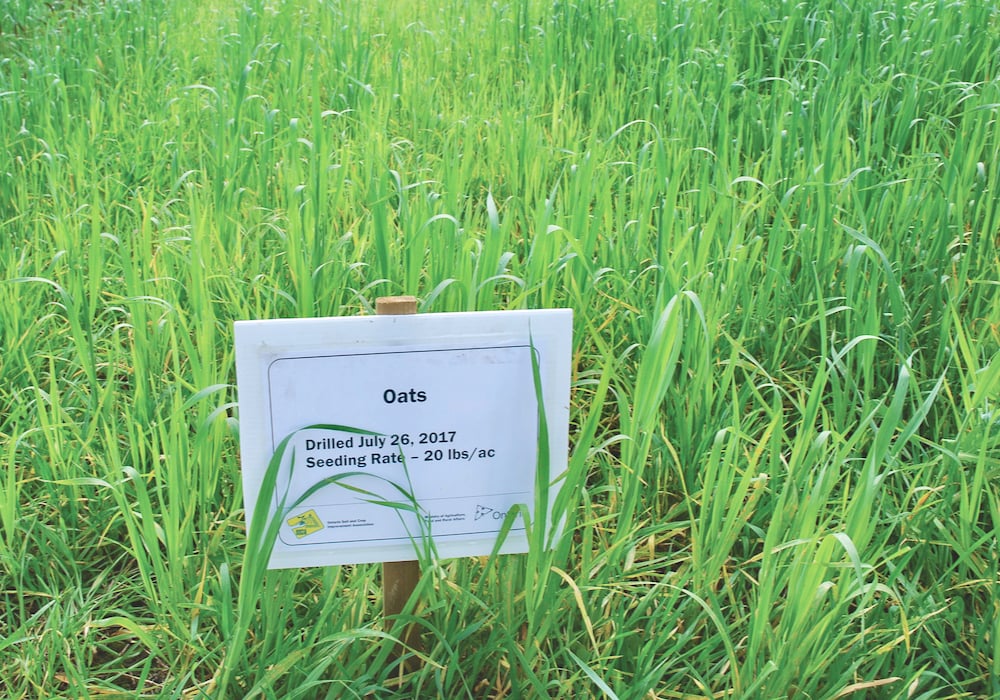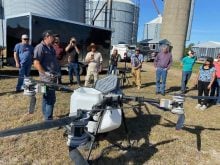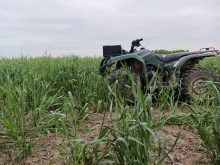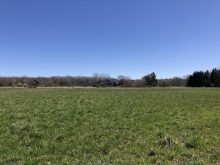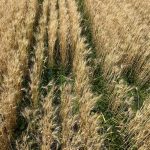Promotion of cover crops, be it a single- or multi-species blend, isn’t always an easy sell but the latest statistics from various sources on cropping practices show intriguing trends.
The 2021 agricultural census showed that more Ontario farmers are using cover crops. What the numbers don’t show are total acres, as well as acres involving inter-seeding, covers grown for forage or a differentiation between single-species and those with multiple species blends.
Why it matters: More Ontario farmers are planting cover crops, but extension staffers would like to see data on what is planted and how crops are used.
Read Also

New Iridium technology helps block GPS spoofing
A tiny new chip will allow Iridium’s Positioning, Navigation and Timing (PNT) signals to be received much smaller devices, create a backstop against Global Positioning Systems (GPS) spoofing.
The 2020 Ontario Cover Crop Feedback Report, published by the Ontario Cover Crops Strategy, showed results from a survey of 520 farmers who grew cover crops that year, on 107,900 acres across the province. Among participants:
- 91 per cent said they had seen benefits from growing cover crops;
- 68 per cent said they had seen improved soil health;
- 59 per cent observed less erosion;
- 57 per cent reported increased soil organic matter levels; and
- 77 per cent observed benefits within three years of adopting cover crops.
There was no data on types of cover crops or why they were grown, but Jake Munroe is pleased with the progress of cover crop use in Ontario and doesn’t discount efforts to put different practices to the test.
“There’s space for every type of grower in the cover crop movement, like those who push the envelope, doing all kinds of innovative things,” says Munroe, field crops soil management specialist with the Ontario Ministry of Agriculture, Food and Rural Affairs.
“And there are those who are making it work with a simpler approach, sometimes on large acres. Both are important.”

Cost-share effect
Availability of funding for cover crops, via cost-share programs, is an important factor. Some lament the idea of a “carrot-and-stick” approach but Munroe disagrees, noting programs like the On Farm Climate Action Fund has made a difference for many growers.
Participants often use a cost-share program to reduce risks in trying the practice.
“There was a recent study in the northeastern United States that looked at incentive program participants who, once they finished the program, saw cover crop use was 37 per cent higher than before enrolment,” says Munroe.
“Sure, they didn’t keep up the same level as when they were getting paid, but 37 per cent is a significant increase.”
OFCAF provided a 65 per cent cost share to growers to seed cover crops and let them overwinter on acres they had not previously seeded for that practice. More than 130,000 acres of farmland were supported during the 2022 and 2023 growing seasons and projects to plant cover crops and inter-seeded crops were implemented on more than 50,000 acres.
The Ontario Soil and Crop Improvement Association received more than 2,700 applications for OFCAF, which included nutrient management and rotational grazing, as well as cover crops.
There was, and continues to be, good interest in the program, says Margaret May, regional program lead for OSCIA.
“In addition, there was the now-completed Canadian Agricultural Partnership, a five-year federal-provincial agreement and a fund targeted to acres that drain to Lake Erie and Lake St. Clair,” said May.
“They provided generous funding for equipment to seed cover crops as well as the seed or custom seeding costs.”

Financial impact
The Cover Crop Feedback Report from 2020 listed the top three barriers to growing cover crops, as reported by growers who didn’t grow them that year.
1. Added costs, particularly seed
2. Lack of equipment
3. Late harvest preventing planting
Ian McDonald finds it frustrating that cover crops are too often promoted as the best or only option.
“There is a lot of management with cover crops but those who hype them make these generalized statements that don’t account for the management risk associated with them,” says McDonald, crop innovation specialist with OMAFRA.
“People have to be encouraged to put the right management to cover crops or there’s no real value to planting them.”
He tries to convince growers to choose over-wintering revenue crops like winter cereals, winter canola or fall rye because of the dollars and the length of crop activity in the landscape. The challenge for most growers who consider cover crops is the belief that terminating them in fall — especially with tillage — is the best course of action.
Some growers still refer to winter wheat as “poverty grass,” so a shift in attitude is needed.
“We have worked a long time to try to make people look at the profitability aspect but they continue to ignore this,” says McDonald. “That’s why we have 5.5 million acres of corn and soybeans and fight to find a million acres of wheat each year.”




